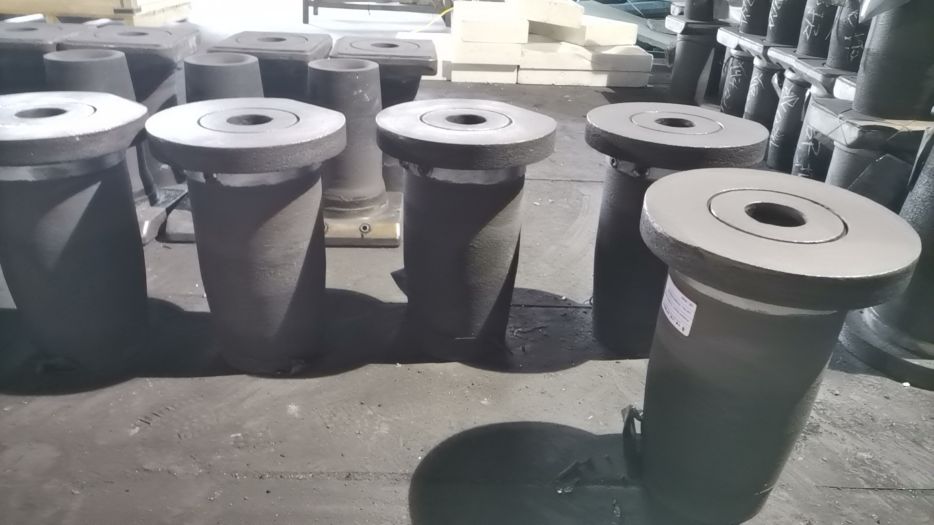In the steel industry, the tundish is a critical component of continuous casting, and the refractory material used in the tundish plays a vital role in ensuring its normal operation. In this blog post, we will explore the different types of tundish refractory materials used in tundishes, their characteristics and applications, providing a better understanding of this important topic.
1. Ladle Shroud:
The function of ladle shrouds is to connect the ladle and the tundish, transporting molten steel from the ladle to the tundish while protecting the casting and preventing secondary oxidation. These shrouds can be customized based on customer requirements, offering high-temperature resistance, corrosion resistance, and a long service life.
2. Stopper:
The monoblock stopper matches the tundish nozzle to control the flow rate of molten steel by adjusting the size of the gap between the plug head and the nozzle bowl. The choice of material for the plug head, including aluminum-carbon, magnesium-carbon, and spinel-carbon, is closely related to steel grade and smelting process parameters. Stoppers provided offer high-temperature resistance, corrosion resistance, and extended service life.
3. Tundish Nozzle:
Installed in the tundish’s base brick, the tundish nozzle collaborates with the stopper to regulate molten steel flow. Our tundish nozzles are characterized by high-temperature resistance, corrosion resistance, and a long service life, all customizable to meet customer requirements.
4. Tundish Metering Nozzles:
Tundish metering nozzles boast precise shapes and dimensions, superior thermal shock resistance, no cracking during service, excellent corrosion and erosion resistance, and a long lifespan for continuous casting.
5. Submerged Entry Nozzle (SEN):
The SEN works in conjunction with the tundish nozzle, connecting the tundish to the crystallizer, safeguarding the casting, and preventing secondary oxidation of molten steel. Customizable according to customer needs, our SEN products exhibit high-temperature resistance, corrosion resistance, and a long service life.
6. Thin Slab SEN:
Thin slab SEN demonstrates exceptional thermal shock resistance, high erosion resistance, no cracking in field use, and a long service life, meeting the requirements for steel mill usage.
7. Impact Pot:
Impact pots help reduce molten steel erosion on the tundish’s working lining near the impact zone, further extending the tundish’s service life, improving molten steel cleanliness, and reducing erosion on the tundish wall. The impact pots we supply are customizable, featuring thermal shock resistance, corrosion resistance, impact resistance, erosion resistance, and long service life.
8. Tundish Working Lining Dry Mass:
The dry mass comprises a mixture of refractory granules and powders with specific particle size distribution, a small amount of low-temperature binder, and sintering aids.
9. Tundish Working Lining Coating:
The coating is primarily made of high-quality magnesia, employing a scientifically designed particle size gradation and various binders.
These main refractory materials for ladles, their types, and characteristics collectively form an indispensable part of the modern steel production process, ensuring the quality and efficiency of steel production.
In summary, the main refractory materials in the steel industry play a crucial role. Understanding the types, characteristics, and application scenarios of these materials helps us better understand and use them to effectively improve steel smelting efficiency and product quality while achieving environmental protection and energy conservation goals.

